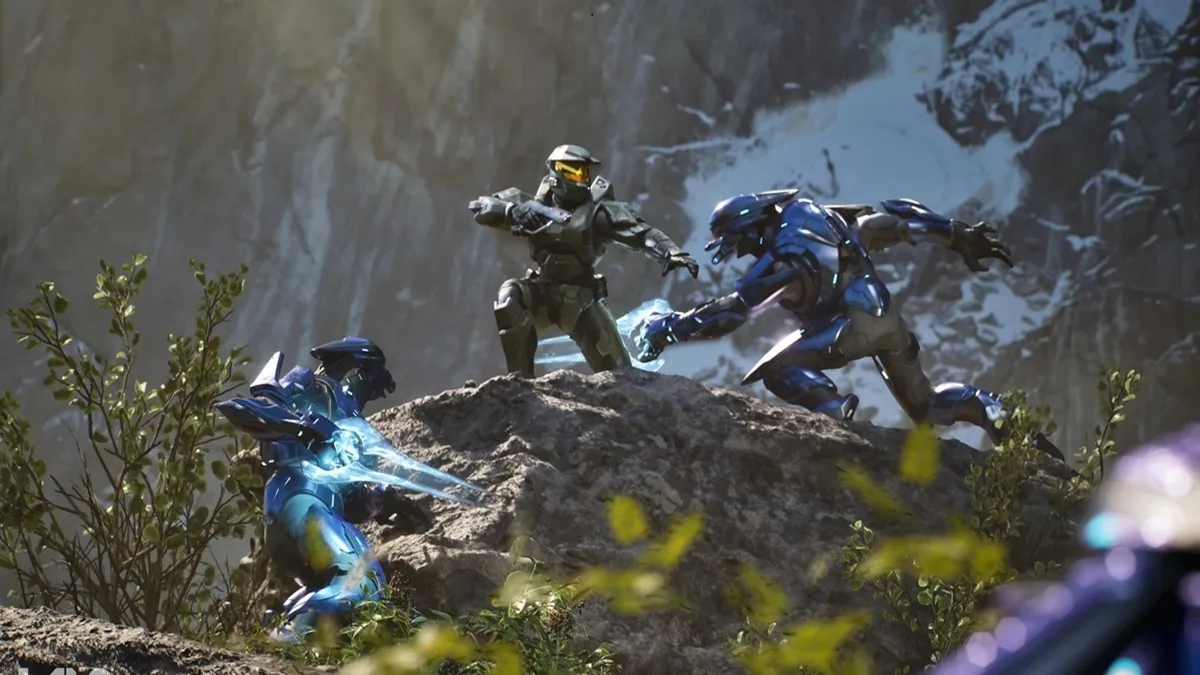After nearly two decades shaping the look and feel of one of gaming’s most iconic universes, Halo’s longtime art director has left 343 Industries—and not quietly. His farewell message, cryptic and tinged with frustration, suggests that the split was less than amicable. For a franchise already navigating turbulent waters, this moment feels like more than just another staff change. It feels like a signal.
Seventeen years is an eternity in the games industry. To remain at the helm of Halo’s visual identity for that long means more than just steady employment—it means stewardship of a cultural icon. From the sweeping alien vistas of the Covenant to the evolving armor of Master Chief, the art director’s fingerprints are etched into the DNA of Halo.
But his exit message, which hinted at disagreements and dissatisfaction, casts a shadow over that legacy. It wasn’t the celebratory send-off of a veteran closing a chapter on their own terms. Instead, it reads like a fracture, a reminder that even the most legendary franchises are not immune to internal discord.
Why This Matters for Halo
Halo is not just another shooter. It’s a franchise that defined console multiplayer, shaped Xbox’s identity, and inspired generations of players. But in recent years, its trajectory has been uneven:
- Halo Infinite’s rocky launch: Delays, missing features, and a live-service model that struggled to find its footing.
- Leadership churn: Multiple high-profile departures at 343 Industries, from studio heads to creative leads.
- Community trust: A fanbase that oscillates between fierce loyalty and deep skepticism.
The departure of a key creative figure—especially under seemingly strained circumstances—adds fuel to the perception that Halo is in a state of identity crisis.
Reading Between the Lines
The cryptic tone of the farewell suggests more than personal burnout. It hints at creative clashes, perhaps over the direction of Halo’s future. Was the push toward live-service at odds with the franchise’s artistic vision? Did corporate pressures override creative instincts? These are questions fans will speculate on, and the lack of clarity only deepens the unease.
What It Could Mean for the Future
The implications are twofold:
- Creative Reset or Creative Drift?
- On one hand, a new art director could bring fresh vision, reinvigorating Halo with bold ideas.
- On the other, losing a veteran risks diluting the franchise’s visual identity, leaving it adrift in a sea of generic sci-fi aesthetics.
- Fan Expectations vs. Studio Reality
- Fans expect Halo to feel like Halo—epic, distinct, and cohesive.
- But if internal struggles continue, the franchise risks becoming reactive, chasing trends instead of setting them.
- The Bigger Picture for Xbox
- Halo has always been Xbox’s flagship. Every stumble reverberates across the brand.
- With Game Pass and new IPs rising, Microsoft may be recalibrating how much weight Halo carries. This departure could be part of that shift.
A Franchise at a Crossroads
Halo is no stranger to reinvention. From Bungie’s original trilogy to 343’s stewardship, the series has evolved with each generation. But reinvention requires stability at its core—and right now, that stability feels fragile.
The departure of a 17-year veteran is not just a staffing change. It’s a moment of reckoning. Will Halo double down on its roots, honoring the legacy that made it legendary? Or will it fracture further, becoming a franchise defined more by what it used to be than what it is becoming?
For fans, this is a time of cautious hope. Change can be painful, but it can also be transformative. The question is whether 343 Industries and Microsoft can harness this moment to rebuild trust, reassert Halo’s identity, and remind the world why Master Chief still matters.
Because if Halo loses its soul, no amount of live-service updates or flashy trailers will bring it back.

